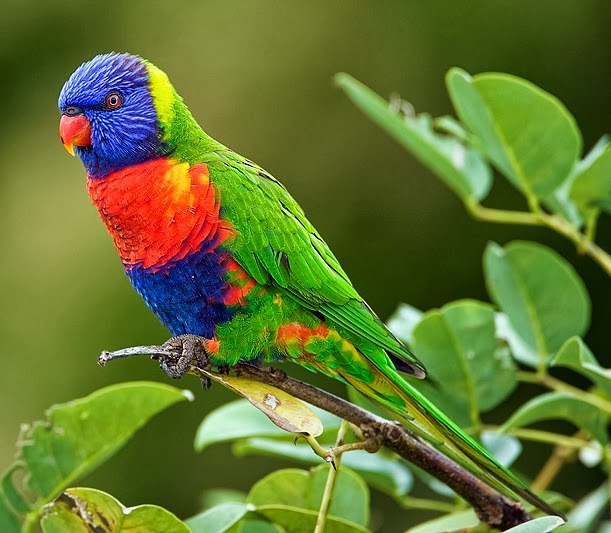 |
| Photo by Ian Colley (PBase) |
Common name:
rainbow lorikeet (en); lóri-arco-íris (pt); loriquet à tête bleue (fr); lori arco iris (es); allfarblori (de)
Taxonomy:
Order Psittaciformes
Family Psittacidae
Range:
This species is found in Australia, from south-eastern South Australia, through Victoria and eastern New South Wales, and in eastern and northern Queensland, in the Northern Territories and in north-eastern Western Australia, and also in southern Indonesia from Bali to Timor, in New Guinea and in Polynesia as far east as New Caledonia.
Size:
These birds are 25-32 cm long and have a wingspan of 45-50 cm. They weigh 100-155 g.
Habitat:
The rainbow lorikeet is found in a wide range of forested habitats, including rainforests, swamp forests, mangroves, woodlands, plantations and wooded parks within urban areas, but also use scrublands, marshes and bogs. They are present from sea level up to an altitude of 700 m.
Diet:
They feed mainly on nectar and pollen of Eucalyptus, Pittosporum, Grevillea, Spathodea campanulata and Cycas, but also eats fruits, seeds and some insects.
Breeding:
Rainbow lorikeets breed in June-January. They nest on a tree cavity, usually a hollow limb of a eucalypt tree, where the female lays 1-3 eggs. She incubates the eggs alone for 23-25 days. The chicks fledge 45 days after hatching. They reach sexual maturity as 2 years of age.
Conservation:
IUCN status – LC (Least Concern)
This species has a very large breeding range and is described as common to abundant on New Guinea and surrounding islands, abundant in northern Australia, common on Timor and Flores and rare on Bali, Sumbawa and Tasmania. The population is suspected to be in decline owing to unsustainable levels of exploitation for both food and the cage bird trade.







